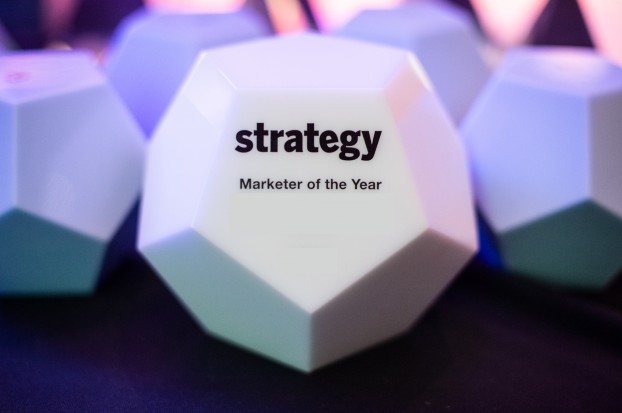This article appears in the January/February 2018 issue of strategy (image created for strategy by Justin Poulsen)
Canadians aren’t exactly known for their boastful “look at us” ways. But, in the past year, a bevy of Canuck brands made a splash on the world stage with creative that’s resonating both at home and abroad.
It’s not a simple task: while Canadian companies have produced work that’s captured global attention, when it comes to campaigns adapted for local markets, U.S. and U.K. ads typically dominate.
But recently, a number of creative pushes, including the Canadian Down Syndrome Society’s (CDSS) Gold Cannes Lion-winning “Down Syndome Answers” and Huggies’ comforting “No Baby Unhugged” movement, have been embraced in markets outside our border.
Those brands also transcended cultural barriers by tapping into a human truth – something that crosses geographic boundaries and helps creative work resonate in whatever country it runs, says Johanna Faigelman, anthropologist and president of Human Branding. Their ideas meet fundamental human demands. Think Maslow’s Hierarchy of Needs, she says. People all need love, shelter and food. Brands that are able to effectively tie their marketing into fulfilling or acknowledging those needs (Coca-Cola has long taken this approach with the idea that people need a little more love in their lives) have a better shot at hitting it global.
That being said, there are nuances in why things travel, says Alan Middleton, marketing professor at York’s Schulich School of Business. They can be subtle differences (Canadians spend more money on buying cleaning products for themselves, while Americans spend more on cleaning products for their home). Or they can be big cultural ones. He points to a failed Japanese commercial, which was adapted from its original in the U.S., featuring a man who walks into the bathroom while his wife is in the bath and washes her back. It’s a loving commercial that taps into the universal truth of the tenderness of love in marriage, but it simply didn’t fit the cultural norms in Japan.
But Middleton says tapping into simple human truths isn’t the only explanation for Canadian creative being picked up in global markets.
First, there’s been a greater focus on strategy recently, and with smaller Canadian budgets, even more effort has been placed on getting it right the first time, he says. The result is insight-driven work that lays the foundation so that those human truths can take the lead.
And global headquarters are taking notice of these great ideas.
“Brands are becoming less precious about where their creative executions come from,” Middleton says. A good idea is a good idea, and corporations are getting better at sharing them, he adds. Many brands implement sharing structures – internal competitions, ranking systems for effective creative – allowing them to evaluate work from around the globe more efficiently.
Ed Casagrande, CDSS board member and the former marketing director, media at Loblaw, believes that “we are seeing more Canadian-led marketing efforts abroad primarily due to the shift from traditional to digital in the media buy…we have recognized the importance of digital and have embraced it while understanding that its success is based on having compelling content.”
The cases

The brand: Boost (Nestle)
The campaign: “Age Well”
The agency: OneMethod
The reach: Six countries have picked up at least part of the campaign.
The human truth: You’re only as old as you feel.
How they did it: In 2014, Nestle’s Boost – a nutritional drink geared at seniors – faced an identity crisis: competitor Ensure was gaining ground and the category as a whole was slowing year-over-year. In response, the brand tapped agency OneMethod to lead a branding change geared towards emotional messaging.
To begin, the brand moved away from the 65-plus crowd to focus on the 50-plus audience. But instead of just targeting all adults over 50, the brand looked at a psychographic of “go-getters,” people who have a positive life mindset and are looking for products to fuel an active lifestyle, the brand team told strategy.
From that new target stemmed the insight that for many people, there’s an age they feel, an age they want to feel and the age they are – but the numbers don’t always add up.
The brand instead focused on how using the product can provide energy and vitality – effectively helping people feel younger, creating a TV spot with the tag “It’s not about counting the years, it’s about making them count.”
The commercial and digital components (launched in 2015) created a platform for the brand to expand into new categories – like protein powders – all building out the identity that Boost helps provide energy and vitality.
According to the brand, the insight – age is just a number and you’re only as old as you feel – helped the brand grow 8.4% in 2016 versus the previous year. It also helped Boost go global in 2017: last spring, six different markets around the world (including the U.S.) picked up the campaign, lifting or adapting the TV spot for their own audiences, and have since begun exploring the idea of aging down their respective demos to target a younger audience.
Want to know how to apply universal truths to work that breaks through in markets beyond our own? Check back tomorrow and Friday for more cases from Canada that have done exactly that.























